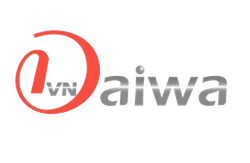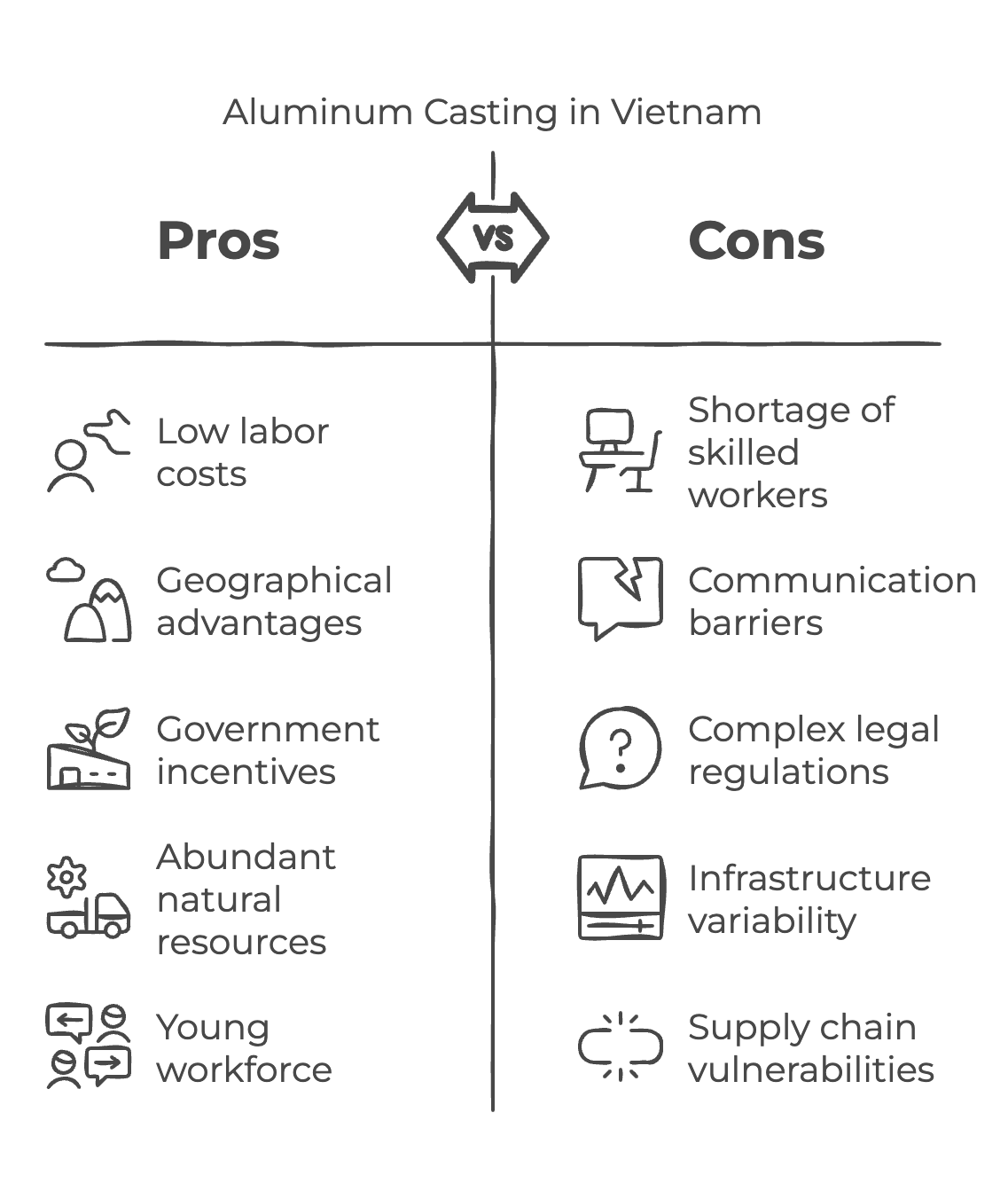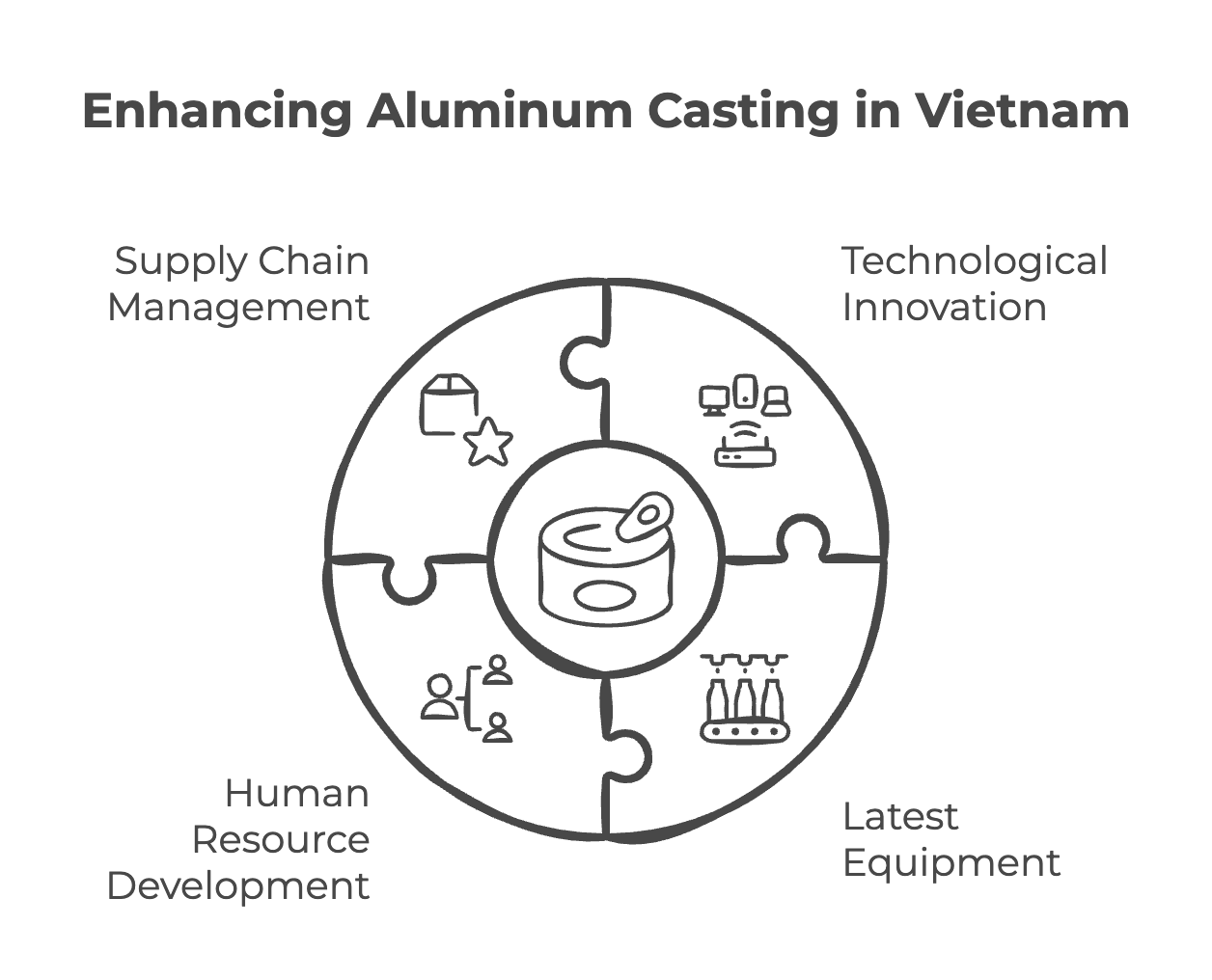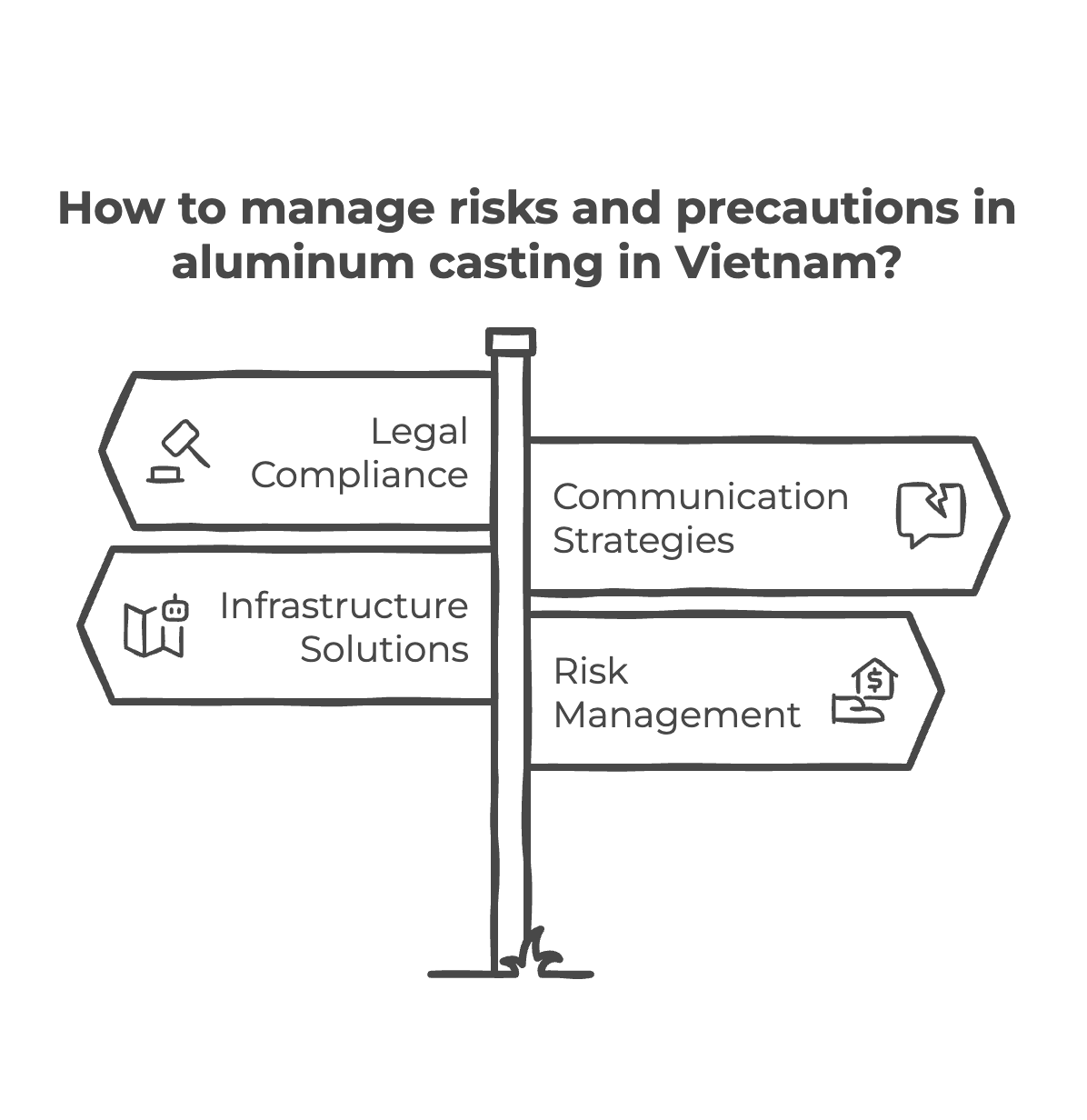◆Table of contents
ToggleIntroduction
Vietnam’s economy has achieved remarkable growth, with the manufacturing industry playing a leading role. In particular, the aluminum casting industry is continuing to develop rapidly, driven by the expanding demand for automobiles, motorcycles, and home appliances. The market size is steadily increasing, and imports and exports are also active.
In Vietnam, in addition to state-owned enterprises, many private companies have entered the aluminum casting business, intensifying competition. Foreign-affiliated companies are also focusing on Vietnam’s potential and accelerating their expansion. Japanese companies are also leveraging their many years of experience and technological capabilities to manufacture and export high-quality aluminum casting products in Vietnam.
However, Vietnam’s aluminum casting technology is still developing, and many processes remain manual. Although mechanization is progressing, there are still many challenges, such as quality control, a shortage of skilled workers, and infrastructure issues.
This article focuses on achieving both cost reduction and high quality in aluminum casting in Vietnam, and explains specific methods. From a multifaceted perspective, such as technological innovation, introduction of the latest equipment, human resource development, and supply chain management, we will provide tips for success in aluminum casting in Vietnam.
Advantages and Disadvantages of Aluminum Casting in Vietnam
Performing aluminum casting in Vietnam offers many advantages, such as cost reduction and geographical advantages. However, there are also some challenges. The specific advantages and disadvantages are explained below.
Advantages
- Low labor costs: Labor costs in Vietnam are very low compared to neighboring countries. For example, wages for manufacturing workers are significantly lower than in Thailand or Malaysia, leading to direct cost reductions. As specific data, the average monthly salary in Vietnam may be less than half of that in neighboring countries.
- Geographical advantages: Vietnam is located in the center of ASEAN countries and is ideal as an export base to the Southeast Asian market. Specifically, transportation costs and time to major export destinations such as Thailand, Indonesia, and the Philippines can be reduced. In addition, economic cooperation with neighboring countries is being strengthened, and further expansion of exports can be expected.
- Government’s preferential investment policies: The Vietnamese government is actively attracting foreign investment and offers various preferential policies. For example, there are reductions in corporate income tax, reductions in land use fees, and support for infrastructure development. Specific preferential treatment can be confirmed on the website of the Ministry of Planning and Investment of Vietnam.
- Other: Vietnam has abundant natural resources (such as bauxite) and a young workforce. These factors also work favorably for aluminum casting.
Disadvantages
- Shortage of engineers and skilled workers: Vietnam lacks engineers and skilled workers with advanced skills. In particular, the development of human resources with specialized knowledge of aluminum casting is an urgent task. Specific challenges include a lack of specialized education at universities and vocational training schools.
- Communication challenges due to differences in language and culture: There are communication barriers between Vietnamese and Japanese or English. In addition, cultural differences can lead to differences in business practices and ways of thinking. Specific examples include delays in communication and troubles due to misunderstandings.
- Complexity of legal regulations and import/export procedures: Legal regulations and import/export procedures in Vietnam can be complex and difficult to understand. In particular, there are many points to be noted, such as environmental regulations and labor laws. For specific procedures, we recommend consulting with experts or consultants.
- Other: Infrastructure development in Vietnam varies between urban and rural areas. Vulnerabilities in the supply chain have also been pointed out. For example, unstable power supply and delays in logistics are issues.
As mentioned above, there are both advantages and disadvantages to performing aluminum casting in Vietnam. It is important to make a choice that suits your company’s business strategy by comprehensively judging these factors.
Specific Methods to Achieve Both Cost Reduction and Quality Improvement
When performing aluminum casting in Vietnam, it is possible to achieve both cost reduction and quality improvement. The specific methods are explained below.
Technological Innovation
- Latest technologies in aluminum casting:
- 3D printing: Speeds up prototype production, reduces costs, and enables casting of complex shapes.
- CNC machining: Contributes to the manufacture of high-precision castings and stabilizes quality.
- Other: Latest technologies are being introduced in various casting methods such as die casting, lost wax casting, and sand casting. By utilizing these technologies, more efficient and high-quality aluminum casting becomes possible.
- Specific examples of technology introduction:
- Example 1: Company A significantly shortened the prototype production period and reduced development costs by introducing 3D printing.
- Example 2: Company B improved the dimensional accuracy of castings and reduced the defective rate by introducing CNC machining.
Introduction of the Latest Equipment
- Types of casting equipment and machinery available in Vietnam:
- Melting furnace: Electric furnace, gas furnace, etc.
- Casting machine: Die casting machine, low pressure casting machine, gravity casting machine, etc.
- Machining equipment: CNC lathe, machining center, etc.
- Other: Quality inspection equipment, non-destructive inspection equipment, etc.
- These equipments can be introduced from various manufacturers in Japan, Germany, China, etc.
- Examples of introducing the latest equipment:
- Example 1: Company C improved production efficiency and reduced costs by introducing the latest die casting machine.
- Example 2: Company D strengthened the quality control system for castings and improved customer satisfaction by introducing quality inspection equipment.
Human Resource Development
- Implementation status of engineer training programs and training in Vietnam:
- Universities: Hanoi University of Science and Technology, Ho Chi Minh City University of Technology, etc.
- Vocational training schools: Vocational training centers in various locations.
- In-house training: Training programs implemented independently by each company.
- These educational institutions offer programs to acquire specialized knowledge and skills related to aluminum casting.
- Success stories of human resource development:
- Example 1: Company E cultivated excellent human resources by collaborating with universities and implementing internship programs.
- Example 2: Company F improved the technical skills of employees by introducing overseas training programs.
Supply Chain Management
- Advantages of local procurement:
- Procurement items: Aluminum alloy, mold materials, and other auxiliary materials.
- Cost reduction effect: Reduction of transportation costs and shortening of lead time.
- Vietnam has abundant resources and diverse suppliers.
- Methods to reduce logistics costs:
- Collaboration with logistics companies: Selection of efficient transportation routes, joint delivery.
- Optimization of warehouse management: Efficiency of inventory management, reduction of storage costs.
- Use of information systems: Sharing of logistics information, tracking management.
- Success stories of supply chain management:
- Example 1: Company G achieved stable material procurement by building long-term partnerships with local suppliers.
- Example 2: Company H reduced logistics costs by collaborating with logistics companies and building an efficient logistics system.
By combining these methods, it is possible to achieve both cost reduction and quality improvement in aluminum casting in Vietnam. It is important for each company to select and implement the optimal method according to its own situation.
Precautions and Risks When Performing Aluminum Casting in Vietnam
Although aluminum casting in Vietnam has many possibilities, there are also points to note and risks. The specific precautions and risks and their countermeasures are explained below.
Laws and Regulations for the Manufacturing Industry in Vietnam
To operate a manufacturing business in Vietnam, it is necessary to comply with various laws and regulations. In particular, the following points require attention:
- Labor Law: The rights of workers and the obligations of companies are stipulated, such as labor contracts, working hours, wages, and occupational safety and health.
- Environmental regulations: There are regulations regarding environmental protection, such as prevention of environmental pollution, waste disposal, and drainage regulations.
- Investment Law: Procedures for foreign investment, tax incentives, and investment promotion fields are stipulated.
- Other: It is necessary to comply with various laws and regulations depending on the business content, such as regulations on import and export and regulations on intellectual property rights.
These laws and regulations may be frequently revised. It is recommended to always collect the latest information and consult with experts (lawyers, consultants, etc.).
Communication Challenges with Local Staff and Countermeasures
Communication with Vietnamese staff is prone to problems due to differences in language and culture.
- Language barrier: Japanese staff who do not understand Vietnamese may have difficulty communicating.
- Cultural differences: Business customs and ways of thinking may differ between Japan and Vietnam.
To solve these problems, the following measures can be considered:
- Use of interpreters and translators: Smooth communication can be achieved by hiring professional interpreters and translators.
- Cross-cultural understanding training: Mutual understanding with staff can be deepened by learning Vietnamese culture and customs.
- Education of local staff: Communication gaps can be reduced by providing education on Japanese language and business manners.
Current Status of Power Supply, Transportation Network, and Port Facilities
Infrastructure development in Vietnam has been progressing rapidly in recent years. However, the following points require attention:
- Power supply: There are areas where power supply is unstable.
- Transportation network: There are areas where the road network is underdeveloped.
- Port facilities: Some ports may have difficulty accepting large ships.
To solve these problems, the following measures can be considered:
- Introduction of private power generation equipment: In areas where power supply is unstable, it is necessary to consider introducing private power generation equipment.
- Selection of transportation routes: In areas where the road network is underdeveloped, it is necessary to select the optimal transportation route.
- Selection of ports: It is necessary to select the optimal port according to the business content.
Political Stability and Exchange Rate Risk
Vietnam is politically stable, but the following points require attention:
- Exchange rate fluctuations: The Vietnamese dong may have fluctuating exchange rates.
- Changes in the legal system: The legal system may change.
To manage these risks, the following measures can be considered:
- Forward exchange contracts: Forward exchange contracts can be used to hedge the risk of exchange rate fluctuations.
- Preparation of contracts: Contracts need to be prepared taking into account the risk of changes in the legal system.
Other Risks and Countermeasures
In addition to the above, the following risks can be considered:
- Natural disasters: Natural disasters such as typhoons, floods, and earthquakes may occur.
- Epidemics: Epidemics such as the new coronavirus infection may occur.
To prepare for these risks, the following measures need to be taken:
- Insurance enrollment: It is necessary to enroll in insurance to prepare for natural disasters and epidemics.
- Formulation of a Business Continuity Plan (BCP): It is necessary to establish countermeasures in case of business interruption.
When performing aluminum casting in Vietnam, it is important to fully understand these risks and take appropriate measures.
Examples of Companies Successfully Performing Aluminum Casting in Vietnam
Many companies have succeeded in performing aluminum casting in Vietnam. Here are some examples based on information obtained from Perplexity.
Case 1: Company T (Die Casting Product Manufacturer)
Company T started operations in Vietnam in 1997 and has grown to three die casting factories. [3] It has fully operated an aluminum die casting production line and started production of magnesium die casting for the first time in Vietnam. [3] It has established an integrated production system from mold maintenance, design, casting, machining, deburring, and painting, and has obtained IATF16949 certification, an international standard for international quality management systems in the automotive industry. [3] In addition to industrial equipment and home appliance parts, orders for electric vehicle (EV) related parts are increasing, and automobile-related products now account for around 30% of total sales. [3]
Case 2: Company M (Pattern Making/Aluminum Casting Manufacturer)
Company M has a sand casting factory in Vietnam and provides aluminum castings to companies operating in Southeast Asia. [1] It mainly manufactures mass-produced products, but also supports small-lot mass production. [1] Quality is ensured by performing design and pattern making in Japan, and mass production at the Vietnamese factory after prototyping and verification. [1] It proposes VA/VE proposals such as material proposals, shape proposals, and heat treatment proposals, and participates from the planning stage of new products for customers. [1] It supports high-difficulty castings such as thin-walled casting, insert casting, and sand casting of ADC materials. [1] Its strengths include providing high-quality aluminum castings with few casting defects, reducing customer costs by supporting small-lot mass production, and supporting customer product development by participating from the planning stage of new products. [1]
Case 3: Company S (Aluminum Product Manufacturer)
Company S has established a joint venture with Washin Industry, Vinawashin Aluminum, and is developing an aluminum extrusion business in Vietnam. [2] It has established an integrated production system from melting casting to extrusion processing, and has installed a melting casting line by introducing Japanese equipment. [2] It conducts factory training in Japan to support Vietnamese staff in acquiring skills. [2] In 2016, it achieved an annual production capacity of approximately 2,000 tons, and in 2017, it aimed for an annual production of 3,000 tons. [2]
These companies have succeeded in their aluminum casting businesses in Vietnam through technology introduction, human resource development, and utilization of local procurement.
Information sources:
[1] Aluminum casting Southeast Asia mass production service https://www.marusank.com/service/%E3%82%A2%E3%83%AB%E3%83%9F%E9%8B%B3%E7%89%A9-%E6%9D%B1%E5%8D%97%E3%82%A2%E3%82%B8%E3%82%A2%E9%87%8F%E7%94%A3%E3%82%B5%E3%83%BC%E3%83%93%E3%82%B9/
[2] Kobe Steel Trading’s aluminum joint venture business that grows with Vietnam https://www.jftc.jp/monthly/archives/001/201704/368a320a0478560082f9ac5f890e8208.pdf
[3] Supplying die-cast products in Vietnam for 30 years, aiming for further leaps with EV conversion https://emidas-magazine.com/ja/news/21112023-1293
Advantages of Japanese Companies Like Daiwa Keikinzoku Performing Aluminum Casting in Vietnam
While aluminum casting in Vietnam offers many benefits, such as cost reduction and geographical advantages, there are even more special advantages for Japanese companies like Daiwa Keikinzoku to perform aluminum casting in Vietnam.
Mechanism of Cost Reduction Through Production in Vietnam
Cost reduction through production in Vietnam is achieved by various factors, such as low labor costs, reduction of raw material costs, and preferential tax treatment.
- Low labor costs: Labor costs in Vietnam are significantly lower than in Japan, leading to direct cost reductions.
- Reduction of raw material costs: Raw materials that can be procured in Vietnam do not incur transportation costs, which can reduce procurement costs.
- Preferential tax treatment: The Vietnamese government is actively attracting foreign investment and offers various preferential tax treatments, such as reductions in corporate income tax and reductions in land use fees.
Due to these factors, Japanese companies can achieve significant cost reductions by performing aluminum casting in Vietnam. Specific examples of cost reductions include labor costs being less than half of those in Japan and raw material costs being reduced by 20%.
High Quality Through Japanese-Style Management
Japanese-style management includes a wide range of elements, such as quality control, production management, and human resource development.
- Quality control: Japanese quality control is highly regarded worldwide, can suppress the occurrence of defective products, and can provide high-quality products.
- Production management: Japanese production management can build an efficient production system and increase the on-time delivery rate.
- Human resource development: Japanese companies focus on employee education and training, and can develop human resources with high technical skills.
Due to these factors, Japanese companies can stably supply high-quality products by performing aluminum casting in Vietnam. Specific quality control methods include building a quality control system that complies with international standards such as ISO9001 and QC circle activities.
Local Procurement in Vietnam
Local procurement in Vietnam contributes to reducing raw material procurement costs, shortening lead times, and stabilizing the supply chain.
- Reduction of procurement costs: Raw materials that can be procured in Vietnam do not incur transportation costs, which can reduce procurement costs.
- Shortening of lead times: Local procurement can shorten raw material procurement lead times.
- Stabilization of the supply chain: Local procurement can stabilize the supply chain.
Japanese companies can smoothly proceed with local procurement by strengthening cooperation with suppliers in Vietnam.
Specific Examples and Achievements Backing Up Daiwa Keikinzoku’s Strengths
Daiwa Keikinzoku has various strengths, such as cost reduction through production in Vietnam, high quality through Japanese-style management, and local procurement in Vietnam. Specific examples and achievements that back up these strengths include high evaluations from customers, awards, and media coverage.
For example, one customer evaluated, “Daiwa Keikinzoku’s products are of high quality and delivery dates are met, so we can trade with confidence.” Also, Daiwa Keikinzoku has been commended by the Vietnamese government as an investment promotion company.
These examples and achievements back up the advantages of Daiwa Keikinzoku performing aluminum casting in Vietnam.
Japanese companies like Daiwa Keikinzoku can succeed in their aluminum casting businesses in Vietnam by taking advantage of these advantages.
Summary
The aluminum casting industry in Vietnam is rapidly expanding with economic growth and the development of the manufacturing industry. The market size is on an upward trend, and imports and exports are also active. However, there are also many challenges, such as quality control, a shortage of skilled workers, and infrastructure issues.
Japanese companies like Daiwa Keikinzoku can gain advantages such as cost reduction, high quality, and local responsiveness by performing aluminum casting in Vietnam. Specifically, low labor costs, reduction of raw material costs, preferential tax treatment, quality control through Japanese-style management, and cooperation with local suppliers can be cited.
To succeed in aluminum casting in Vietnam, it is necessary to maximize these advantages and overcome the challenges. Specifically, the introduction of the latest technology, human resource development, supply chain management, and cooperation with local companies are important.
Japanese companies, including Daiwa Keikinzoku, have the potential to contribute to the development of the aluminum casting industry in Vietnam and achieve their own growth.



